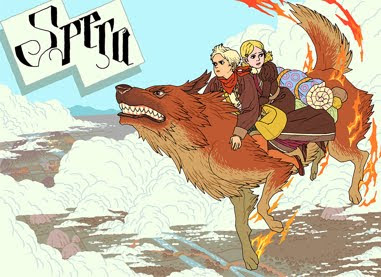
The Limits of Control is a film that only ‘clicks’ once Bill Murray arrives in its final moments. Until that point it is another type of film – a cold, desperately philosophical film which aims to serve as a document of what it means to be cool in the 00s. Another cold, desperately philosophical film attempted this for the 60s: Jean-Pierre Melville’s Le Samouraï, which The Limits of Control owes a great deal to.
Isaach De Bankolé’s detached samouraï is a hitman who must harness the power of his imagination in order to make his hit. He does this as a pop culture hitman, wearing a blue suit and sculpted demeanour, through paintings found in the Reina Sofía Museum in Madrid. By viewing these paintings – here used as an example of legitimate art – and applying them to his pop imagination, he is able to form encounters with other genre caricatures. The ‘legitimate art’ of these encounters is found in the characters’ simple philosophical musings.
Until Bill Murray arrives, the characters of the film only tell Isaach what he wants to hear. His imagination can only stretch so far. After all, the reason Isaach exists is so his life can be given its empty poetry by the writing and direction of Jim Jarmusch and the cinematography of Christopher Doyle: the bulk of the film is comprised of sometimes gorgeous, always cool shots of Isaach as spare selections of drone metal accompany his existence. Then Bill Murray gasps ‘fuck you’ and the film suddenly means something.
What little dialogue and lyrics there are up to this point focuses on the need for arrogant men to remind themselves they’ll be in the same spot at the end of their lives as everyone else. At its most basic and obvious, the film is about the battle between artistic bohemians wishing for a world of colour and stuffy businessmen not knowing what colour is. I believe the film is not necessarily on either side, and in this way the film becomes an allegory on the need for the low in high culture and vice versa.
To illustrate this I will use the film’s references to film history. There is, first of all, Isaach De Bankolé’s approximation of Alain Delon’s character in Le Samouraï: both are hitmen who exist solely in their own minds, who rarely speak and only hear what they desire. Both have their own unique rituals: Isaach De Bankolé does his controlled stretches every morning and drinks two (2) cups of espresso, while Alain Delon straightens his hat in front of a mirror every time he leaves his apartment. Through references to noirs of the past, Le Samouraï is both an art film that aims to be a gangster film and a gangster film that aims to be an art film. Through references to Le Samouraï, The Limits Of Control is a film that aims for these aims.
There are the constant references to film in the dialogue: when Isaach De Bankolé meets the Always Nude Woman, the Always Nude Woman – lying on a bed on her stomach much like Brigitte Bardot at the beginning of Jean-Luc Godard’s Contempt – asks Isaach De Bankolé if he thinks she has ‘a nice ass’. He replies, with only a split-second of hesitation, ‘yes’. This is, of course, the opening to Contempt, and will be obvious to many film buffs and European cinema-goers but obscure to most North Americans. I use this as my example of a reference to a film considered art, and thus a reference to film as art.
For the reference to film as pop culture, Tilda Swinton stops by Isaach De Bankolé’s favourite café and not-so-casually says The Limits Of Control is a Hitchcock film. If Jim Jarmusch had not focused on the film’s alienating aspects, this would almost be true, at least as far as film as entertainment is concerned.
For one other example of one of the many ways in which The Limits Of Control both contrasts and parallels high and low culture, I will use the Always Nude Woman. When she first appears on screen, as a reference to Contempt, her body is utilised both in a gently exploitative way (far more gently than Brigitte Bardot’s producer-mandated appearance) and as an example of beauty in the female form. This combination then branches out in the two directions: there are the sequences where she is posing in a transparent raincoat, a packaged object, and there are the sequences in which she is lying on the bed beside Isaach, and the lighting is hitting her just right, and we’re able to look at the female form as an example of the highest possible art.
That it is not until Bill Murray appears on screen – a comedian known to one generation for his roles in films such as Ghostbusters and Caddyshack, and now known to another generation for his roles in films such as Rushmore, Lost In Translation and Broken Flowers – is only suiting. Like the paintings Isaach De Bankolé uses to ignite his imagination, The Limits Of Control offers a lot to read into, far more than its juvenile philosophical musings might imply. The fact it is so ceaselessly cool while doing this makes it a (mostly) successful convergence of what is considered high and low art in our culture today.




